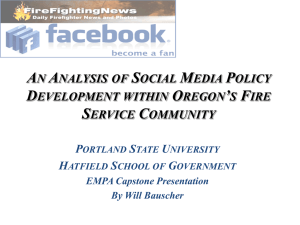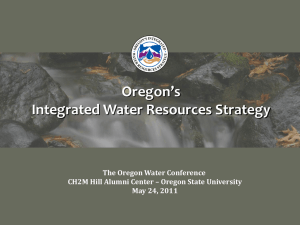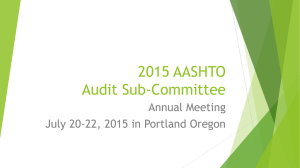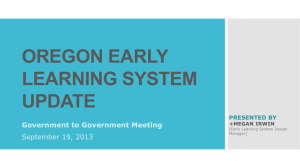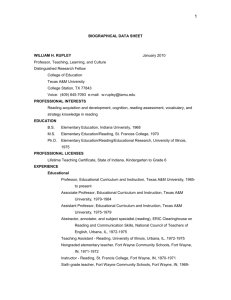Early Childhood and Family Investment Transition Report
advertisement
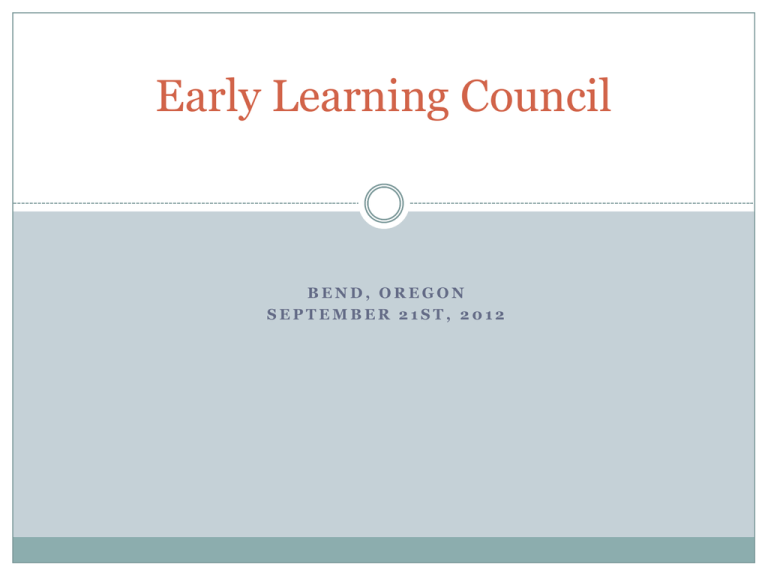
Early Learning Council BEND, OREGON SEPTEMBER 21ST, 2012 Early Learning Council Members • Pam Curtis, Chair, Deputy Director, Center for Evidence-based Policy, Oregon Health & Sciences University • Bobbie Weber, Research Associate, Family Policy Program, College of Public Health and Human Sciences, Oregon State University • Janet Dougherty-Smith, Former Director, Early Childhood Services for Clackamas County Education Service District • Norm Smith, President, Ford Family Foundation • Dick Alexander, Chairman of Capital Pacific Bank and Board member of the Children's Institute • Marlene Yesquen, Attorney, Medford's Black Chapman Webber and Stevens, Medford School District Board Member • Teri Thalhofer, RN, Director, North Central Public Health • Jim Tierney, Executive Director, Community Action Team • Harriet Adair, Regional Administrator, Portland Public Schools • Dana Hargunani, Child Health Director, Oregon Health Authority • Lynne Saxton, Executive Director, Christie Care-Youth Villages of Oregon • Kara Waddell, Administrator, Oregon Child Care Division • Dell Ford, Oregon Head Start Collaboration Director • Eva Rippeteau, Political Coordinator, Oregon AFSCME • Vikki Bishop, Early Childhood Education Program Manager, Confederated Tribes of the Grande Ronde • Kim Williams, Director of North Central ESD Early Education • Nancy Latini, Deputy Superintendent, Oregon Department of Education • Charles McGee, Executive Director and Co-Founder of the Black Parent Initiative • Dick Withnell, Founder, Withnell Auto ELC Charge 1. Ensure all Children are: Ready for Kindergarten Ready to Read in 1st Grade Reading at Grade-level by end of 1st Grade 2. Integrate and coordinate resources and efforts In Oregon 45,000 children born each year 270,000 ages 0-5 40% at risk Low income Children of color Families accessing state assistance programs $350+ million per year In Oregon Complex education, health and support system More than 2 dozen state-sponsored programs 28,000 non-profit organizations Eight state-level coordinating bodies Local governance structures Uncoordinated and disconnected Difficult to navigate Lack of outcome accountability In Oregon Underperforming early identification efforts Example: 40% of children in foster care on TANF for 2+ months Unacceptable results 36% of children in poverty (30% nationally) 34th in child health system performance 40%+ not ready for school Bottom quartile of US for reading proficiency after 3rd grade High rates of non-completion The Future: Back to the Vision Oregon’s Early Learning System Early identification & risk assessment 2. All children have early learning opportunities 3. Coordinated & integrated support 1. Use of Family Resource Management Consistent regional approach 4. Outcome focus Service contracts Kindergarten readiness assessment 5. Integrated data system Oregon’s Early Learning System 6. Consolidate governance structures 7. Parental access and transparency TQRIS 8. Trained and supported workforce 9. Global Children’s Budget Local Implementation through Community Based Coordinators of Early Learning Services Communities will submit an application that demonstrate how they will achieve the outcomes: Ensure all Children are: Ready for Kindergarten Ready to Read in 1st Grade Reading at Grade-level by end of 1st Grade Pam Curtis ELC Chair curtispa@ohsu.edu 503-494-3264 Jada Rupley Early Learning Systems Director jada.rupley@state.or.us 503-373-0071 Duke Shepard duke.shepard@state.or.us 503-373-1558 Heidi McGowan heidi@hbsaa.com 541-929-7501 Christi Peeples christi.peeples@state.or.us 503-378-6768





